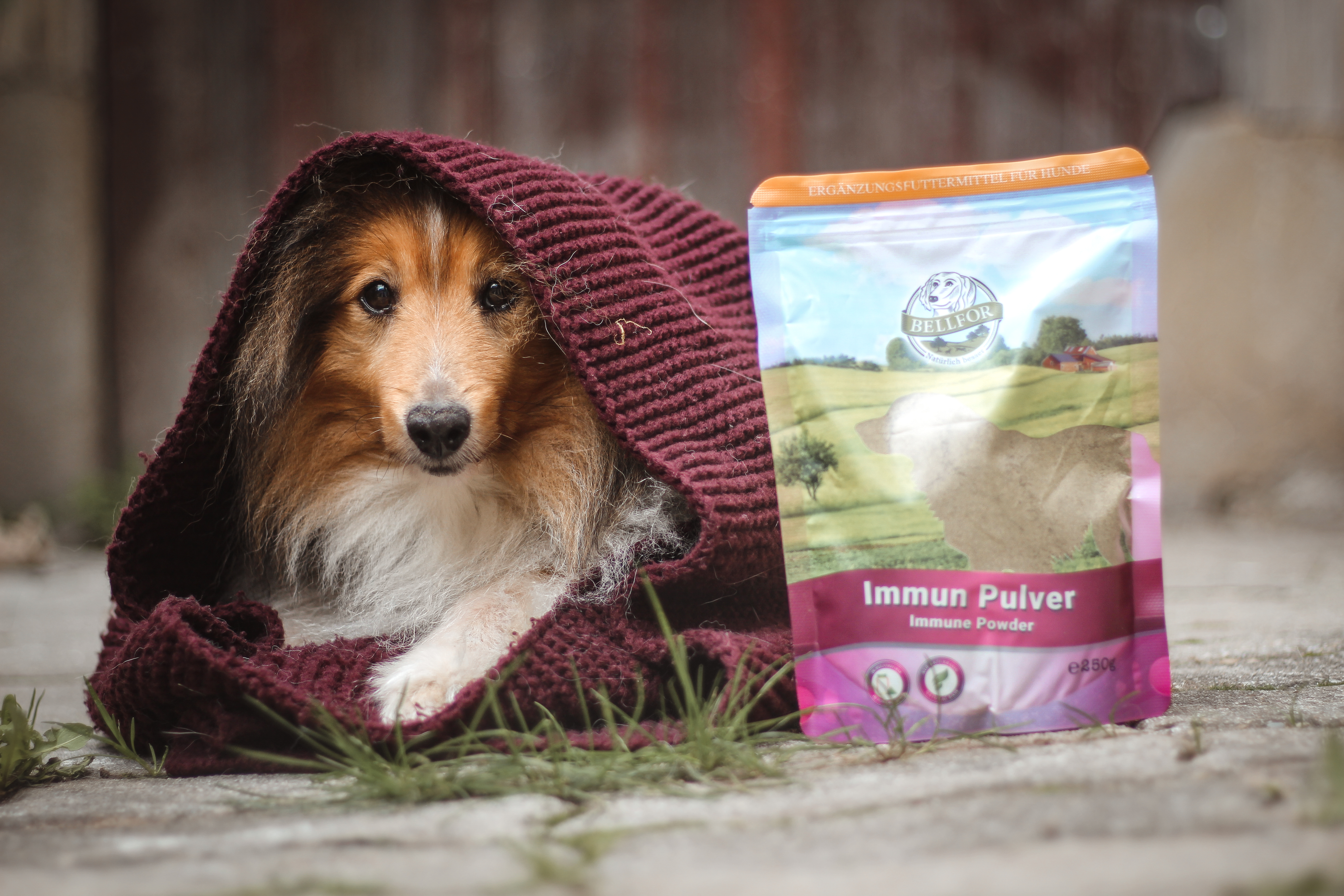
According to a study, almost 20 percent of all four-legged friends in the United Kingdom are infected with them. Once a dog suffers from Giardia, it has difficulty getting rid of the unicellular parasites of the small intestine.
Without the consistent implementation of suitable measures for treatment, the infection can cause a nutrient deficiency and inflammation in the long term and pose a serious health risk, especially for puppies and older animals.
In the following we will explain which symptoms Giardia cause in your dog, how you can be diagnosed and how a treatment can succeed even without chemical agents.

Giardiosis of the dog is a diarrheal disease caused by giardias in dogs. Giardia are tiny parasites that affect the small intestine and are not visible to the naked eye.
Giardia are found all over the world. In total, there are 41 different species that can infest not only dogs, but also cats, rabbits and humans. If a dog suffers from Giardia, Giardia duodenalia or Giardia intestinalis is usually responsible.
If the parasites enter the body of a dog, they attack the mucous membranes of its small intestine. There they feed on sugar, which the four-legged friend ingests with its food, and multiply very quickly under appropriate conditions.
Giardia go through two different stages. First, they enter the dog's body in the form of cysts, a small number of which are usually sufficient to trigger an infection.
In the dog's body, they then develop into trophozoites that attach themselves to the intestinal mucosa and begin to form new cysts. These are then excreted again by the dogs infected with Giardien, so that the parasites can spread further.
Giardia cysts are very resistant and can easily survive outside a host for several weeks. They are ingested in particular by infected water and food as well as the faeces of other animals. Since dogs infected with Giardia excrete large quantities of cysts, they can also get caught on the anus of the four-legged friend. This means that dogs can easily infect themselves again and again with licks in this area.
Giardia is very contagious. A dog infected with them can therefore easily transmit them to other pets or humans. The latter is relatively rare. The danger of a zoonosis, however, does exist.
For this reason, care should be taken when coming into contact with a dog suffering from Giardia. At least humans should not let themselves lick by their four-legged friend in this case until further notice. This is especially true for children.

The extent to which symptoms of an infection with Giardia can be detected in your dog cannot be determined in advance. Because not all four-legged friends, who suffer from the intestine parasites, arouse inevitably also the appearance to be seriously ill.
The immune system of the affected animal and its diet also play a role. Especially with young and weak animals, the infection can lead to severe symptoms, which can have serious consequences for the health of the dog.
The malicious thing about a Giardia infection is the fact that the symptoms in your dog can subside again and again in the meantime. However, this does not mean that your four-legged friend must have survived them. Because often the improvement is only of short duration. This is especially true if you do nothing to treat the Giardia in your dog.
If the parasites can reproduce unhindered, the immune system and the intestinal health of the quadruped suffer increasingly, which makes him susceptible to further diseases.
Regardless of these symptoms, it is especially the color and smell of the excrement that indicates that your dog is carrying Giardia. A yellowish discoloration and a rotten or rancid smell are signs that you should be aware of.
To confirm your suspicion, we recommend that you visit your vet. The vet can test your dog's faeces to see if it is actually infected with the parasites.
If your dog is infected with Giardia, it is time to act. Experience has shown that the small intestinal parasites are extremely persistent.
For the success of the therapy of a Giardie infection with your dog it is crucial with which consequence you convert the necessary steps. A half-hearted approach will not lead to the desired result.

Be aware that all your efforts to treat your dog for Giardia are free without adequate hygiene measures. The intestinal parasites are extremely resistant, can survive for weeks without a host and spread very quickly throughout the house.
Disinfectants and a steam cleaner are therefore part of the basic equipment for Giardia treatment.
The hygiene measures mentioned aim to remove the parasites' breeding ground outside their host and to prevent the Giardia from spreading further to other animals or humans.
The next step is to control the giardias in your dog's intestines by changing the diet.
In this context, you should know that giardias require large amounts of sugar to survive. Since the majority of dry foods available have a high starch content, they usually get more than enough. In your dog's intestines, the starch is converted into sugar, which gives the Giardia perfect living conditions and allows them to reproduce unhindered.
In order to prevent this, you basically only have to do one thing: switch to a food that contains as few carbohydrates (and therefore also starch) as possible. We recommend that you choose your favourite Bellfor menu. Our wet food is grain-free and low in carbohydrates. It is therefore perfect for feeding dogs suffering from Giardia.
Feeding your dog with Bellfor's favourite menu means that the parasites in your dog's intestines no longer get enough nutrients, making survival and reproduction much more difficult. Apart from that such a food is more digestible for the organism of the four-legged friend anyway and helps among other things to avoid intolerances and digestive problems.
In order to further increase the chances of success of the treatment of Giardia infection in your dog, we also advise you to use Bellfor Vermal Powder. This is a natural dietary supplement made from selected herbs.
The special mixture of herbs in Bellfor Vermal Powder creates a hostile environment in the intestines of your four-legged friend. The preparation is therefore the perfect supplement to our low-carbohydrate wet food and can make an important contribution to treating giardias in dogs with the help of the diet.

Giardia are intestinal parasites that can infest other animals as well as humans besides dogs.
Due to their resistance, the treatment of infected animals requires a lot of effort.
The often common therapy with common active substances like Fenbendazol or Febantel can help against Giardia, but at the same time it is a great burden for the body of your dog. This is especially true if the medication has to be used over a longer period of time.
Since experience shows that dogs with a weakened immune system are more susceptible to infestation with Giardia, she also recommends preventive support of the immune system. For this purpose, dog owners can rely on a food supplement with Bellfor Immune in the form of powder or grain-free soft snacks.
For this reason, we recommend that you counter Giardia in your dog with consistent hygiene and our Giardia Set. If you implement these measures consistently over a period of four weeks, the chances are good that your dog has survived the Giardia infection afterwards.

